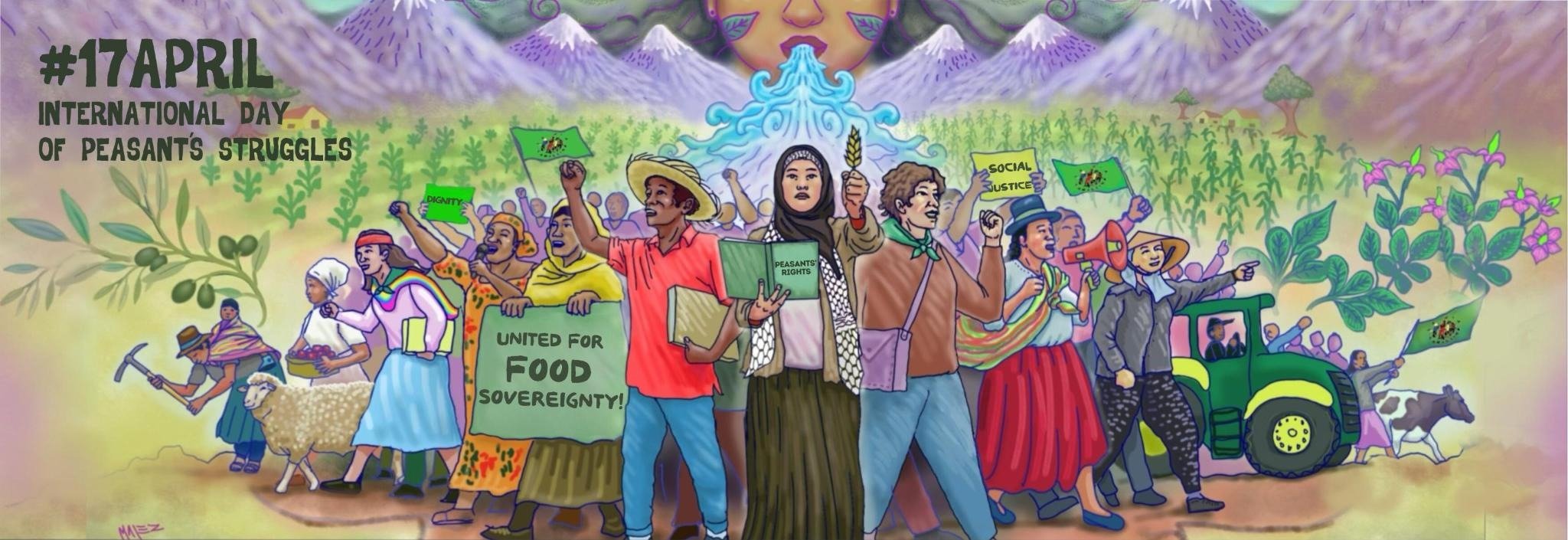 Media Release
Media Release
July 4, 2016 – In advance of the annual conference of Federal, Provincial and Territorial (FPT) Agriculture Ministers to be held in Calgary, July 20-22, 2016, the National Farmers Union (NFU) sent a letter to each of the ministers with input regarding the next agriculture policy framework. In it, the NFU provides recommendations for both the Business Risk Management (BRM) programs and the Strategic Investment programs. The text of the letter is reproduced below:
The next FPT agriculture policy framework will be an important tool for shaping the future of farming in Canada. The NFU advocates for maintaining the family farm as the primary food producing unit in Canada. As a general farm organization, our membership reflects the diversity of production systems, farm sizes and farmer demographics across the country. We promote food sovereignty, which is a holistic approach that puts people, food and nature in the centre of the policy picture, and that makes democratic control of the food system its priority. Numerous surveys and opinion polls indicate that non-farming Canadians generally share these values with us and support policy that enables farmers to obtain fair returns from producing wholesome food in an environmentally friendly way. We encourage you and your fellow ministers to use the lens of food sovereignty when assessing the implications of each element being considered for the successor to Growing Forward 2.
We expect the next agriculture policy framework will continue to have two main areas of focus: safety net, or Business Risk Management (BRM), programs for farmers and Strategic Initiative funding to support programs with broader policy goals.
Agriculture and Agri-Food Canada research has shown that the BRM program, AgriStability, is used disproportionately by larger farms. When GF2 was being designed, the NFU called for a cap on per farm payouts. We also recommended maintaining AgriStability’s 15% margin loss trigger. However, GF2 did not cap payments and it changed the trigger to 30% below reference margins. The result was only those sectors with both extreme volatility and highly specialized operations could benefit from the program. In addition, GF2 capped the margin loss payout at the lesser of a farm’s reference margin or its eligible input costs, effectively making the program irrelevant to low-input operations. Smaller farms are largely excluded from AgriStability because the cost of paying an accountant to do all the paperwork required to apply for it cannot be justified by the program’s risk reduction potential. Thus, both the cost of participating and the structure of GF2’s AgriStablity program favour larger scale, specialized, high-input farms, while low-input diversified farms have had to manage the risks such as disease outbreaks, price volatility and market issues due to currency fluctuations, without public support.
When designing the next FPT agriculture policy framework, we urge you to ensure that BRM programs are accessible, relevant and useful for farms of different sizes and production systems and to ensure that payouts are capped so these programs do not incentivize excessive expansion and risk-taking by the largest farms.
We also urge you to recognize the importance of farmer-controlled marketing institutions as the most effective method of reducing business risk for farmers. In the late 1990s, provincial single desk marketing agencies for hogs were eliminated. The resulting exposure to price volatility means the sector is now highly dependent on BRM programs. The farmer-directed single desk Canadian Wheat Board formerly provided equitable market access, premium prices and a powerful voice of advocacy for western wheat and barley farmers. Its destruction has reduced farmers’ income potential and increased the need for some to draw upon the BRM programs to continue operating. In contrast, the supply managed sectors have not needed to use GF2’s BRM programs. The assurance of a market and a fair price allows these farmers to invest in their farms while producing the right amount and quality of product at the right time. Our supply management system has proven its worth to farmers, consumers and the public treasury alike. We urge you defend supply management from ill-advised calls to abandon it, as well as to speak out against illegal milk-protein imports that weaken our dairy sector.
Under GF2, the Strategic Initiative programs were primarily used to promote innovation, competitiveness and export markets. Most of GF2’s Strategic Initiative programs are strongly focused on increasing exports. Yet, since GF and GF2 have been in place we have seen some sectors lose significant ground to imports. For example, in 2005 Canada’s imports and exports of processed fruit and vegetables were nearly balanced; by 2014 the value of imports exceeded that of exports by close to $1.5 billion. Lamb imports have been rising steadily, while Canada still exports almost no lamb at all. Some of these imports come from places like California that are experiencing severe climate change impacts. Others come from places like New Zealand that are so far away that transporting the products contributes excessive greenhouse gas emissions. The result is Canadian consumers’ grocery dollars are increasingly leaving Canada to pay for imported food from other jurisdictions – including food that could be reliably produced on our own farms, and processed and marketed here with a smaller environmental footprint and with greater benefit to our own economy.
We would like to see the next policy framework do much more to develop our food system’s capacity to develop and retain domestic markets for Canadian farm products. Improving our processing, storage and distribution capacity along with creating and strengthening effective, farmer-controlled marketing institutions will provide the infrastructure needed for Canadian farmers in every province to provide more food to their urban neighbours. These investments will be strategic, as they will reduce the risks of food shortages and sharp price increases resulting from our reliance on distant suppliers that are vulnerable to climate change. This approach would also reduce the uncertainty caused by imported food prices changing with currency exchange rate fluctuations that are beyond farmers’ and consumers’ control.
We are aware that “social license” is on the ministers’ radar. We urge you to avoid providing Strategic Initiative dollars for a public relations approach to consumer concerns. Instead, ensure that the fundamentals that earn consumers’ trust in the food system are in place – an accountable, transparent, regulatory system where rules are both created and properly enforced to protect the public interest. Any Strategic Initiative program funding in relation to social license issues should be used to help develop or enhance the kinds of farming practices that respond to consumer demand.
Climate change is having ever greater impacts on farmers as we experience severe weather and climate effects more frequently. We would like disaster relief programs to reflect the reality that some disasters create problems that last longer than one year. Increased total funding as well as program design changes should be put in place to recognize the need for multi-year assistance.
We also recommend that all strategic investments be evaluated for their impact on climate change. If countries fail to reduce global GHG emissions, the world’s ability to produce food will be severely impaired and climate instability will make farmer livelihoods less certain. Projects should not be approved if they would increase GHG emissions. Instead, the priority should be on initiatives that help farmers and others in the food industry reduce their GHG emissions. The new policy framework should also include Strategic Initiative funds to help farmers adapt to climate change effects such as flooding, drought, new insect and disease problems, less predictable frost dates, lack of snow cover — through research, education and outreach – not by product development and commercialization. Investing in GHG mitigation and climate adaptation strategies will also help reduce business risks by helping farms become more resilient.
As you prepare the framework for the next agriculture policy framework you will also be considering how you will measure its performance. We urge you to define success as more farmers, more farms, a lower average age of farmers in Canada, and an increase in the amount and kinds of food produced in Canada that is sold and consumed domestically.
For more information:
Jan Slomp, NFU President: (403) 704-4364
Ian Robson, NFU Region 5 (Manitoba) Coordinator: (204) 741-1017







